Modern football is a constant arms race between pressing structures and build-up mechanisms. As pressing systems become more sophisticated — from coordinated high presses to compact mid-blocks — teams must adapt their possession play to create new angles, stretch opponents, and reduce risk in dangerous zones.
One underexplored yet highly effective solution is the deep fullback. Instead of pushing high and wide to stretch play, the fullback deliberately positions deeper during the build-up phase. This subtle shift can transform how a team progresses the ball, how the opposition press is disrupted, and how transitions are controlled.
This article explores the tactical functions of the deep fullback, the variations available, and the practical implications for coaches seeking to integrate it into their game model.
Why the Deep Fullback Matters
In traditional build-up structures, fullbacks advance early and provide wide outlets, often receiving the ball high near the touchline. This works against passive blocks but becomes risky against coordinated presses:
- Trapped against the sideline: High, wide fullbacks have limited passing angles and can be pressed aggressively.
- Exposed rest-defence: With both fullbacks pushed up, counter-attacks can target large spaces behind them.
- Predictable build-up patterns: Opponents know where the next pass is likely to go and can anticipate accordingly.
The deep fullback provides an alternative. By positioning closer to the center-backs, the fullback:
- Changes pressing geometry: The pressing winger must curve wider and longer, disrupting timing.
- Widens build-up lanes: Passing channels open into midfield or across the backline.
- Balances security and progression: Possession is safer, while the team remains compact against counters.
This approach doesn’t abandon attacking width altogether — it simply changes when and how width is established, often with wingers or advanced midfielders taking on that responsibility instead.
Positional Dynamics and Pressing Disruption
The value of the deep fullback becomes most evident against teams that press with a front two or use wingers to curve pressing runs.
- When the fullback is higher, the winger can press diagonally, simultaneously closing the center-back and blocking the passing lane outside.
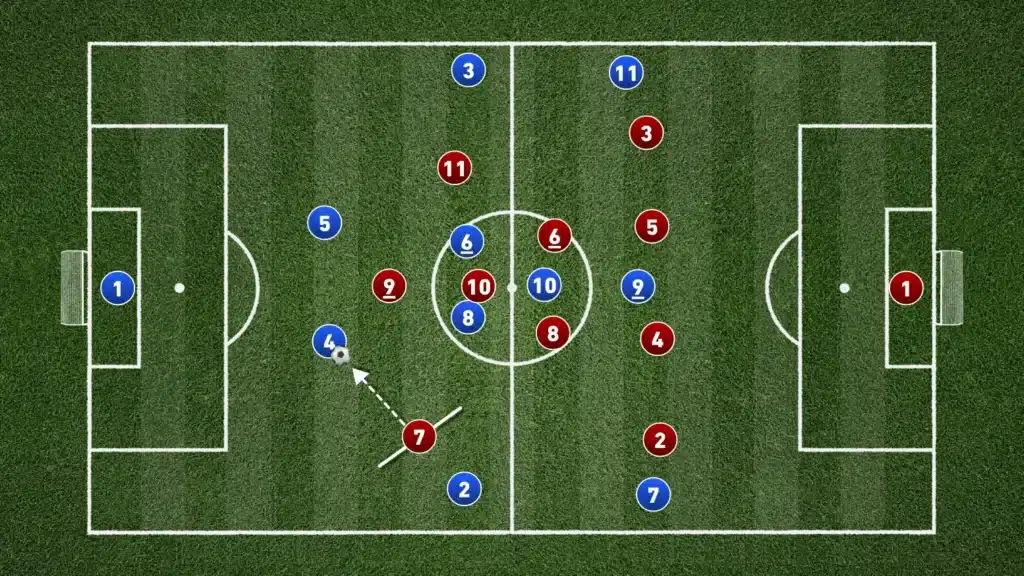
- When the fullback is deeper, the winger must cover more distance. If he curves outward too much, the center-back has a clean lane into midfield. If he presses straight, the fullback becomes accessible.
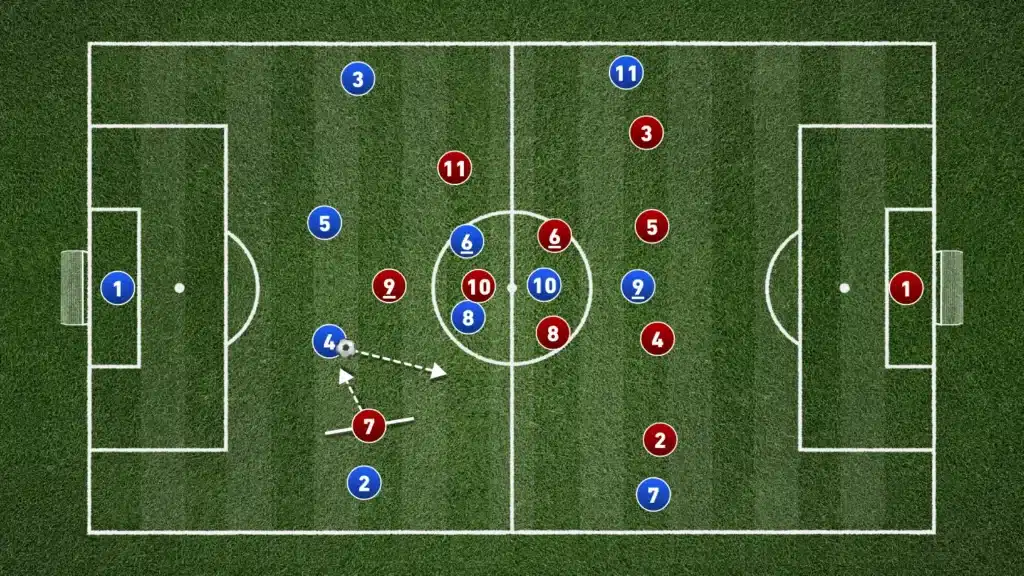
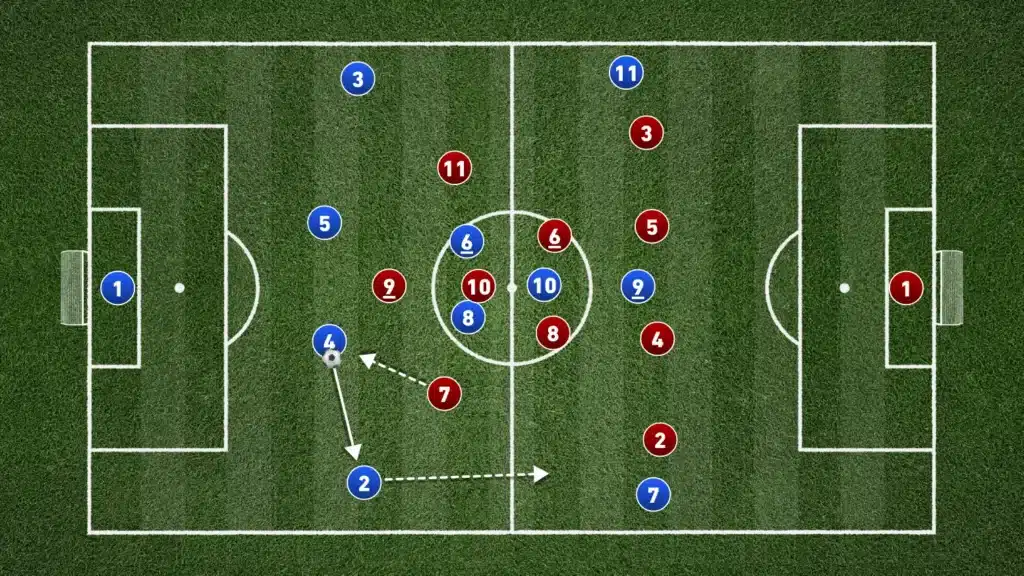
This creates a dilemma for the pressing side: either commit more players forward and risk leaving gaps, or accept slower pressing triggers and allow controlled possession.
Case Example – Spain:
Marc Cucurella often positions slightly deeper in Spain’s first phase. This drags the opposition winger wider, delaying the press and allowing Rodri or Fabian Ruiz to receive in midfield with more time. Spain’s clean progression into midfield is often built on these marginal gains.
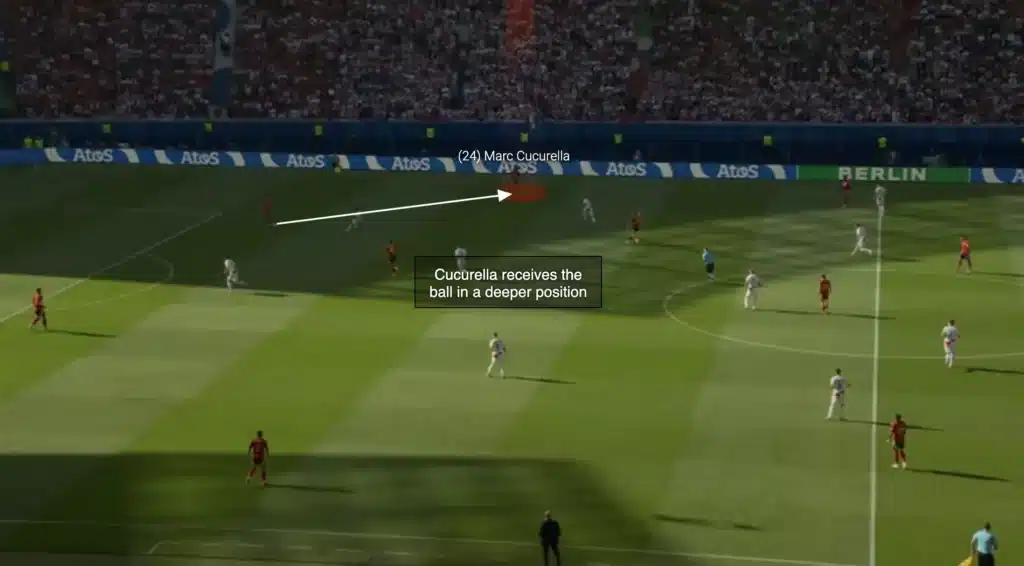
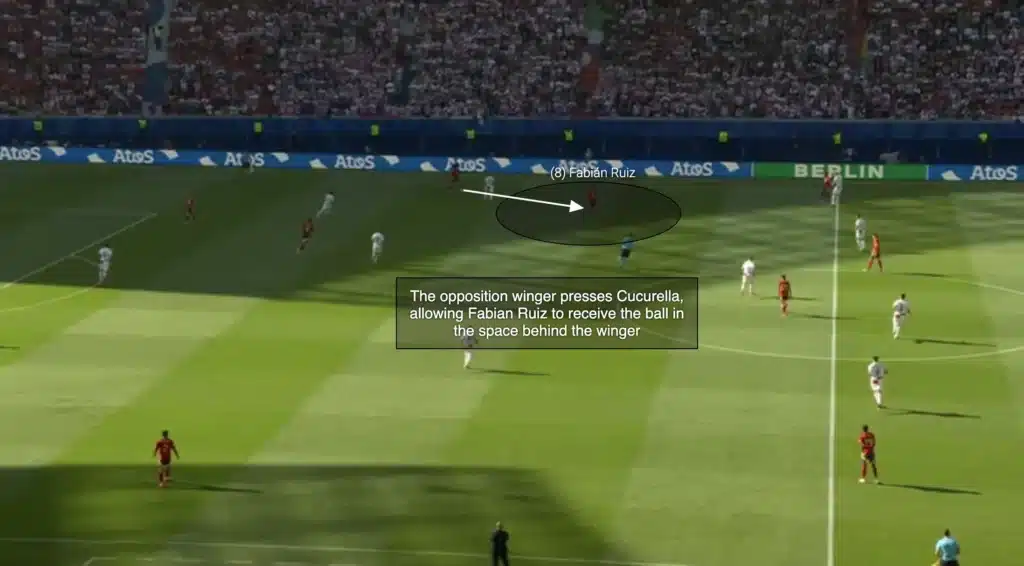
Creating Space in Midfield
The deep fullback is not just a safety valve; it’s a tool to manipulate midfield structures.
Against a 4-4-2 mid-block, for example:
- The winger is dragged wider by the fullback’s deep position.
- The near-side central midfielder must decide: press the pivot and leave space behind, or stay compact and concede central progression.
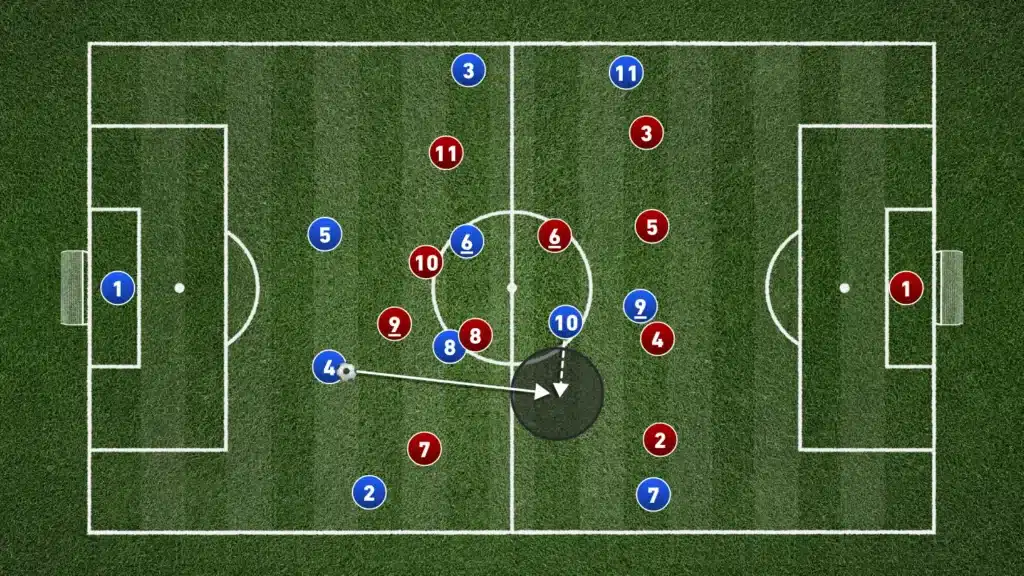
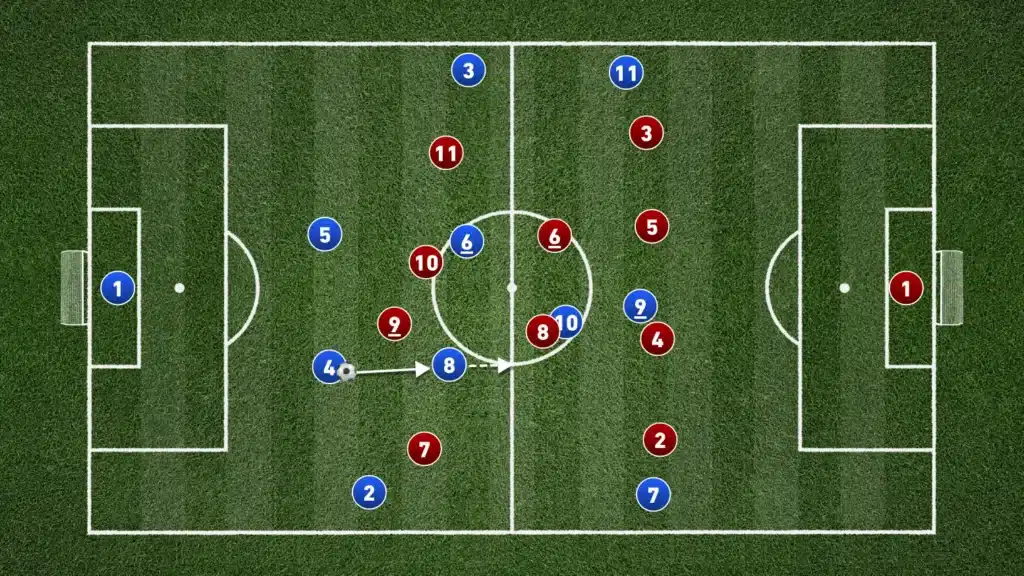
This uncertainty creates openings for line-breaking passes.
Defensive Security and Rest-Defence
In modern football, build-up structures are always linked to rest-defence — the positioning of players to deal with counter-attacks.
By staying deeper:
- Fullbacks are increasing coverage against direct transitions.
- Center-backs are not forced into wide defensive races, as the fullback is closer to help.
- Teams can push one more midfielder higher without losing stability.
Variations of the Deep Fullback
There is no single way to deploy the deep fullback. Coaches can adapt the concept to their tactical model:
1. Ball-Side Deep Fullback
- The fullback on the ball side drops close to the center-back.
- Most useful against pressing wingers who curve their runs.
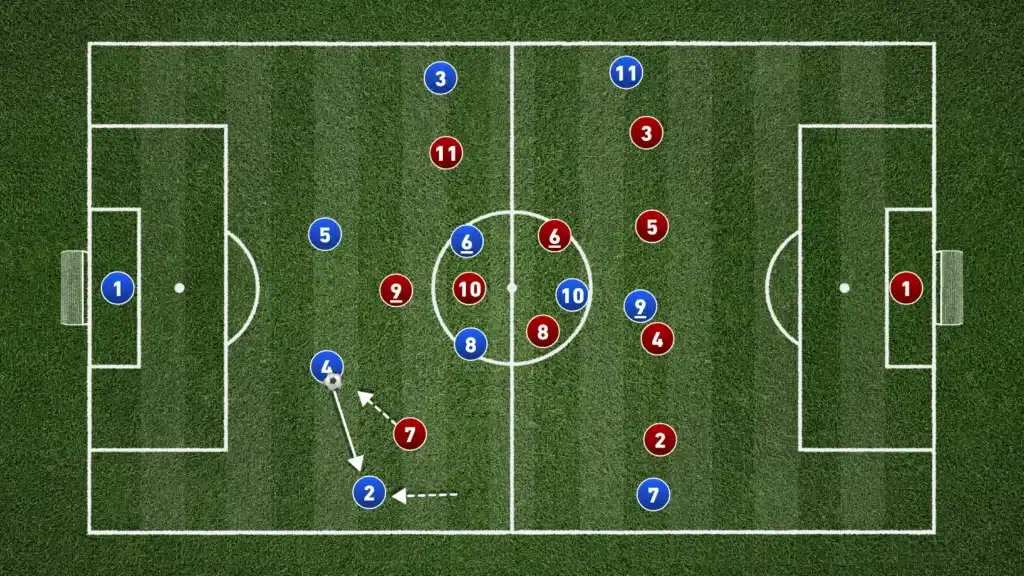
2. Ball-Far Deep Fullback
- The far-side fullback drops, giving the goalkeeper and center-backs an outlet for switches.
- This stretches the opposition horizontally, but requires accurate long passing and pinning movements from forwards and midfielders.
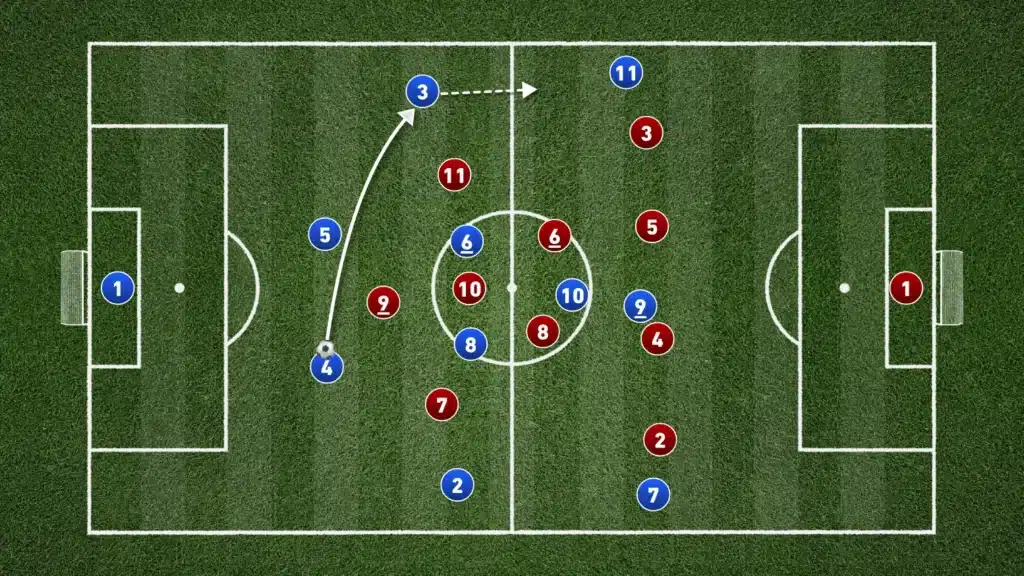
3. Asymmetric Back Three
- One fullback drops alongside the center-backs, while the other pushes high.
- Common against front twos, as it creates a numerical superiority in the first line.
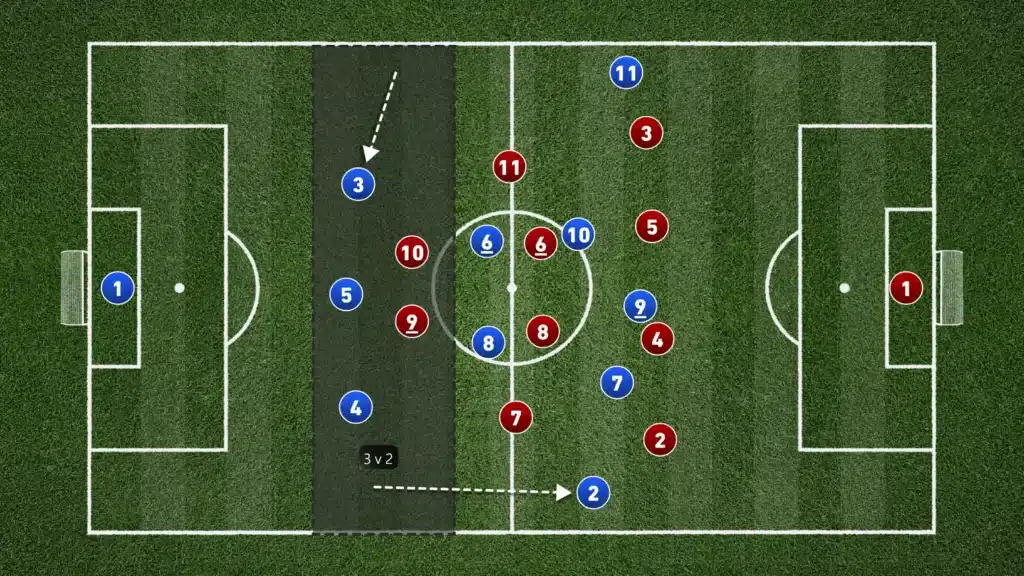
Coaching Applications and Training Design
For coaches, using a deep fullback requires clear role definition and training design.
- Recognition of pressing triggers: Players must know when to stay high (vs passive blocks) and when to drop deeper (vs aggressive presses).
- Midfield coordination: The pivot’s role is crucial — if he is marked tightly, rotations with interior midfielders or false fullback movements may be needed.
- Attacking balance: Wingers or attacking midfielders must provide width to compensate for the deeper fullback.
- Transition management: Communication is key. If the fullback sits deep, the nearest winger often needs to widen out immediately when possession progresses.
Practical Training Example:
In a build-up rondo (7v4), the coach positions the fullbacks deeper next to the center-backs. The pressing team must curve their runs realistically, while the possession team works on finding the pivot or progressing wide. Variations can add triggers for switching play or transitioning to goal when the pivot receives under pressure.
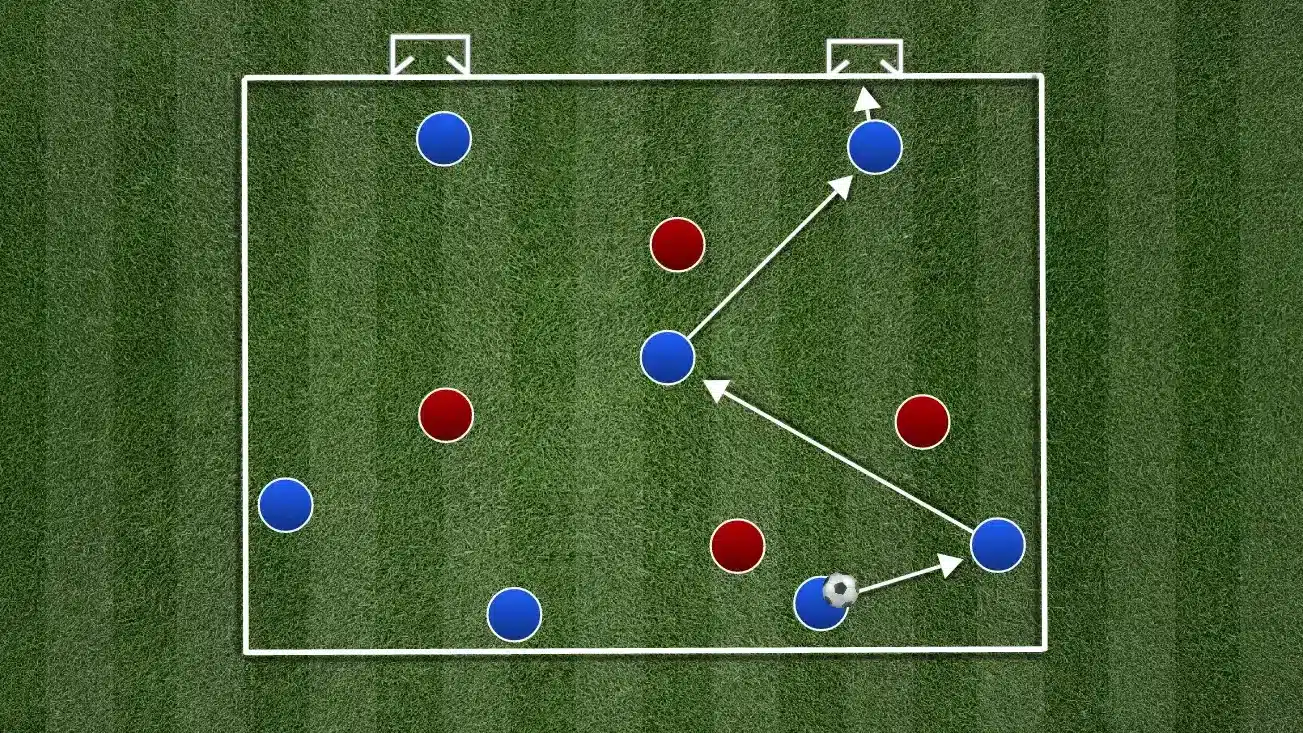
Risks and Limitations
Like any tactical mechanism, the deep fullback comes with trade-offs:
- Reduced natural width: If the winger doesn’t adjust, the team can become too narrow in attack.
- Reliance on midfield pivots: If the pivot struggles technically or physically, the deep fullback structure loses much of its benefit.
- Predictability if overused: Opponents may adjust by pushing their winger deeper and pressing more aggressively with the central midfielder.
These risks highlight why the deep fullback should be used as a flexible adjustment, not a rigid system.
Conclusion
The deep fullback is a powerful but underutilized tool in modern build-up play. By slightly adjusting positioning, teams can manipulate pressing structures, open midfield lanes, and maintain stronger rest defense against transitions.
Its greatest value lies in its flexibility: a fullback can drop deeper as a situational adjustment against specific pressing schemes, rather than as a permanent role. For coaches and analysts, the challenge is to recognize when this mechanism provides the most benefit — and to train players to execute it with clarity, timing, and coordination.
In the constant tactical battle between pressing and build-up, the deep fullback offers one more weapon to tilt the balance in possession’s favor.
The images in this article were made with Once Sport, a top platform for football analysis, video breakdowns, and tactical planning. Use code TFA10 for 10% off and a 1-month free trial.
